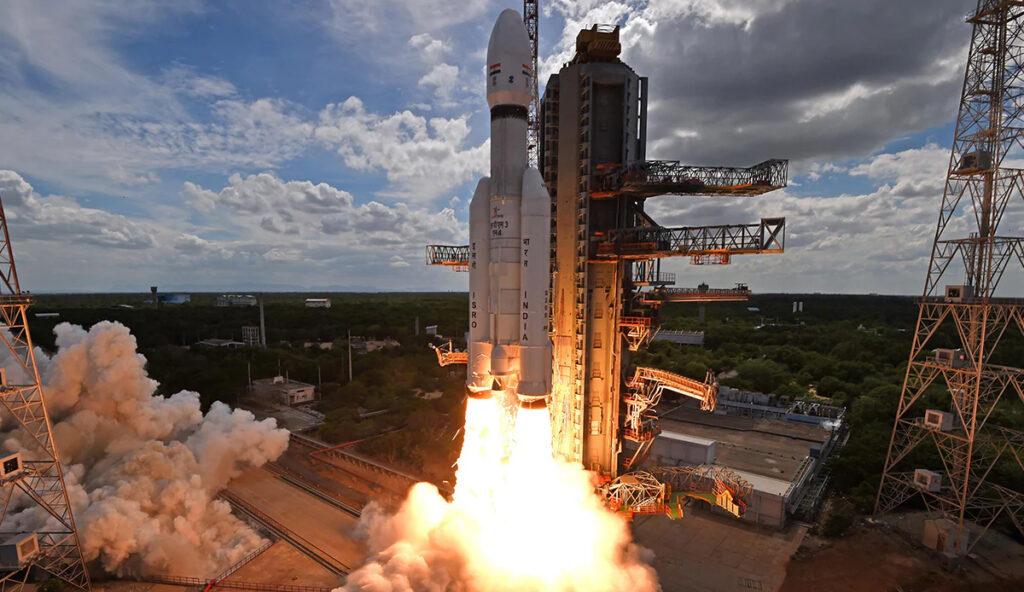
As Indian Space Research Organisation (ISRO) has launched Chandrayaan-3, people have numerous questions regarding the mission. Here are several commonly asked questions along with their answers:-
What is Chandrayaan-3?
As you can see from the name Chandrayaan 3 – it is the third lunar exploration mission by the Indian Space Research Organization (ISRO). Chandrayaan-3 is the name of the spacecraft. It was launched on July 14, 2023, at 2.35 pm IST from the Satish Dhawan Space Centre in Sriharikota, Andhra Pradesh, India.
What does the Spacecraft consists of?
The entire spacecraft consists of three parts – a lander, a rover, and a propulsion module. And this entire spacecraft is attached to a launch vehicle.
LVM-3 is the launch vehicle. It is a three-stage medium-lift launch vehicle developed by ISRO. It is designed to launch communication satellites and spacecraft into Geostationary Orbit. Please don’t get confused between a launch vehicle and a propulsion module. The purpose of a launch vehicle is to carry a spacecraft into Orbit. After that, the launch vehicle is no longer needed. It will either Burnout or fall into the sea.
The Chandrayaan-3 spacecraft is composed of two components: 1) the propulsion module, and 2) the lander-rover modules. The name given to the lander is Vikram, and the name given to the rover is Pragyan.
The primary role of the propulsion module is to transport the lander-rover payloads to the Moon’s orbit. Upon reaching the lower orbit of the Moon, the lander-rover payload will separate from the propulsion module and begin its descent to the lunar surface. The lander is equipped with engines that enable it to decelerate and do softlanding on the Moon, ensuring a controlled landing rather than a crash-landing.
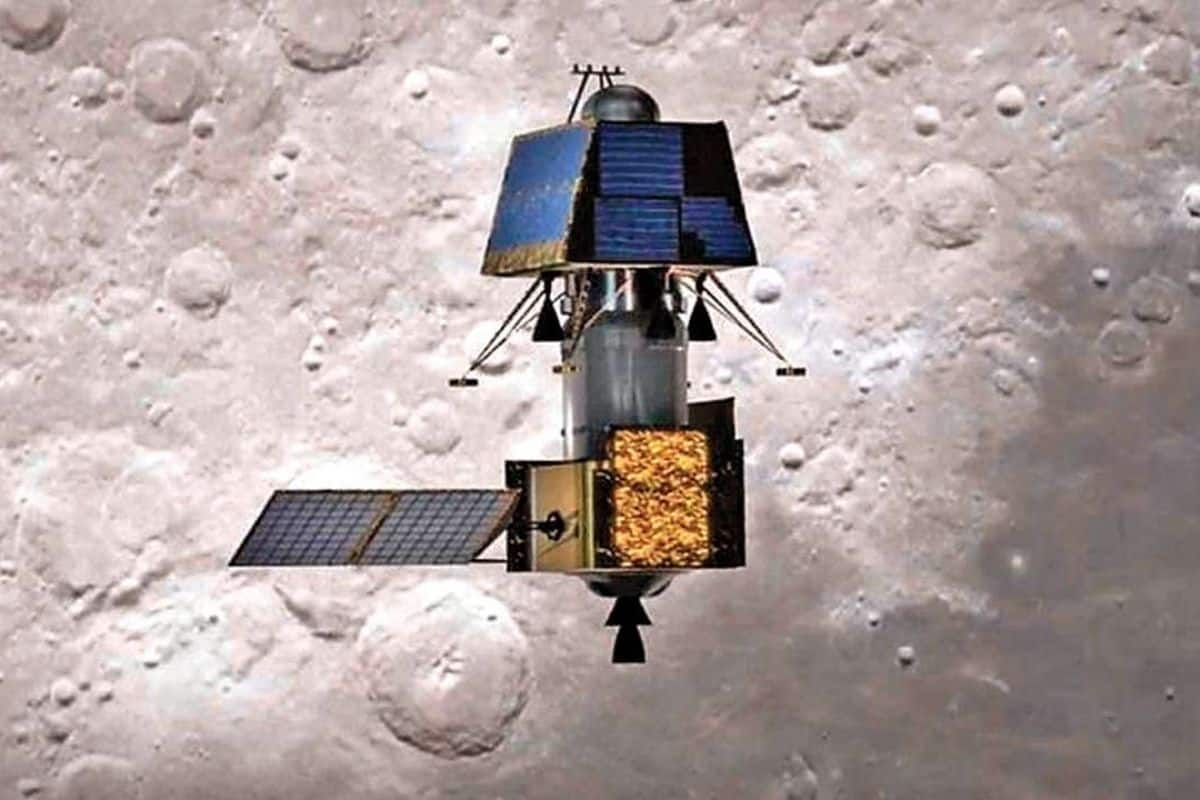
The rover, resembling a small trolley with wheels, is housed within the lander. Once the lander touches down on the Moon, the rover will deploy from the lander and begin traversing the lunar surface.
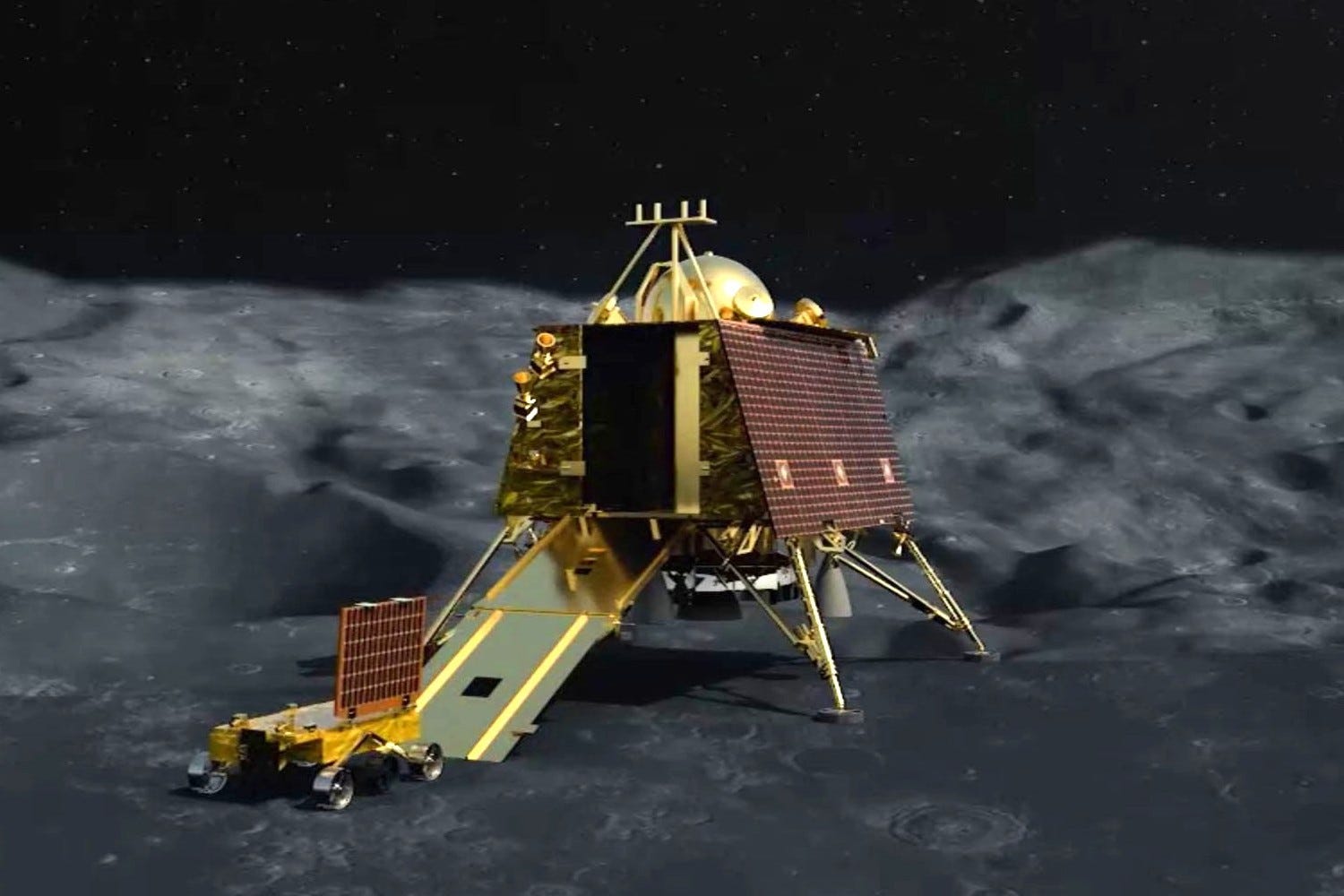
Why does Chandrayaan-3 will take 40 days to reach Moon, when 50yrs ago, U.S Apollo 11 spacecraft took 4 days.
The reason for this difference in time is primarily due to the different approaches taken in terms of rocket design and mission objectives.
While it is technically possible to launch a rocket directly to the Moon, such a mission would require an extremely large rocket. To cover the distance of 384,400 kilometers, the rocket would need to carry a huge amount of fuel. That additional fuel would significantly increase the weight of the rocket, demanding a more powerful propulsion system. For instance, the Saturn V rocket used by Apollo 11 in 1969 stood at a towering 363 feet. In comparison, the LVM-3 rocket used by Chandrayaan-3 is 142 feet tall. Large rockets of this magnitude come with substantial costs, both in terms of development and launch.
Moreover, there is no pressing urgency for Chandrayaan-3 to reach the Moon quickly. Therefore, it follows a trajectory that takes advantage of Earth’s gravity to propel itself towards the Moon. By utilizing gravity assists and carefully planned trajectories, the mission can conserve fuel and achieve its objectives without the need for an exceptionally large and costly rocket.
Thus, the decision to take a longer route to the Moon allows for more efficient use of resources, both in terms of rocket design and mission planning, while still accomplishing the scientific objectives of the mission.
Why Chandrayaan-3 has to circle Earth several times to reach Moon? Why such a longer route?
This trajectory is chosen to take advantage of Kepler’s second law of planetary motion. According to Kepler’s second law, an imaginary line connecting a planet and its satellite sweeps equal areas in equal intervals of time. This implies that a satellite moves faster as it approaches the planet and slows down as it moves away, following an elliptical orbit. This property is utilized to provide Chandrayaan-3 with the necessary velocity to travel towards the Moon.
After the LVM-3 rocket places Chandrayaan-3 into Earth’s orbit, the spacecraft starts orbiting the Earth independently in an elliptical orbit. As it reaches the farthest point from Earth (apogee), engineers on the ground make slight adjustments to change its direction, resulting in a larger orbit during the subsequent loop. This process is repeated, gradually increasing the spacecraft’s velocity with each orbit. After completing several loops, typically around 5-6, the spacecraft attains sufficient velocity to slingshot itself towards the Moon.
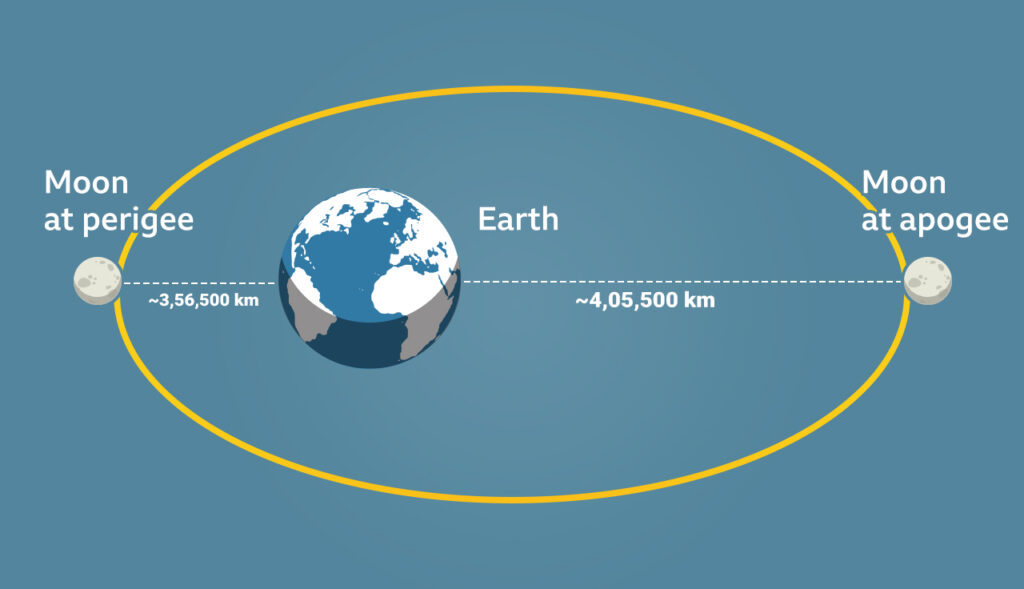
Once the spacecraft reaches the Moon, a similar process occurs in reverse. Through successive orbits, the spacecraft gradually approaches the Moon. When it reaches a distance of approximately 100 kilometers from the lunar surface, the lander detaches itself from the main propulsion module and commences its descent to the Moon for a soft landing.
How will the lander land on Moon?
The lander of Chandrayaan-3 undergoes a controlled descent onto the Moon’s surface rather than a free fall. It is equipped with four thrusters or engines that generate an upward thrust to decelerate its descent. Through careful calculations, it has been determined that just prior to touchdown, the lander will be moving at a velocity of 2 meters per second.
In the case of Mars, spacecrafts like Curiosity & Perseverance were seen landing with parachute. Isn’t that best and simple?
The reason for the difference in landing methods between Mars and the Moon is attributed to the presence of an atmosphere on Mars, whereas the Moon lacks an atmosphere altogether. Although the Martian atmosphere is relatively thin, with an average atmospheric pressure only about 1 percent of Earth’s, it still provides a medium for certain landing techniques. The Martian atmosphere consists mainly of carbon dioxide. The presence of even this thin atmosphere allows for the utilization of parachutes during descent since they require air, or an atmosphere, to create drag. Conversely, the Moon has no atmosphere at all, which means that traditional parachute-based landing methods cannot be employed.
What will happen after the lander (Vikram) touches down on Moon’s surface?
Once the lander vikram successfully touches down on the Moon’s surface, it will conduct a thorough assessment to ensure everything is in proper working order. Subsequently, metaphorically speaking, a mechanism similar to a trap door located beneath the lander will open, allowing guiderails to extend outward. The rover will then smoothly glide down these rails, facilitating its descent to the lunar surface.
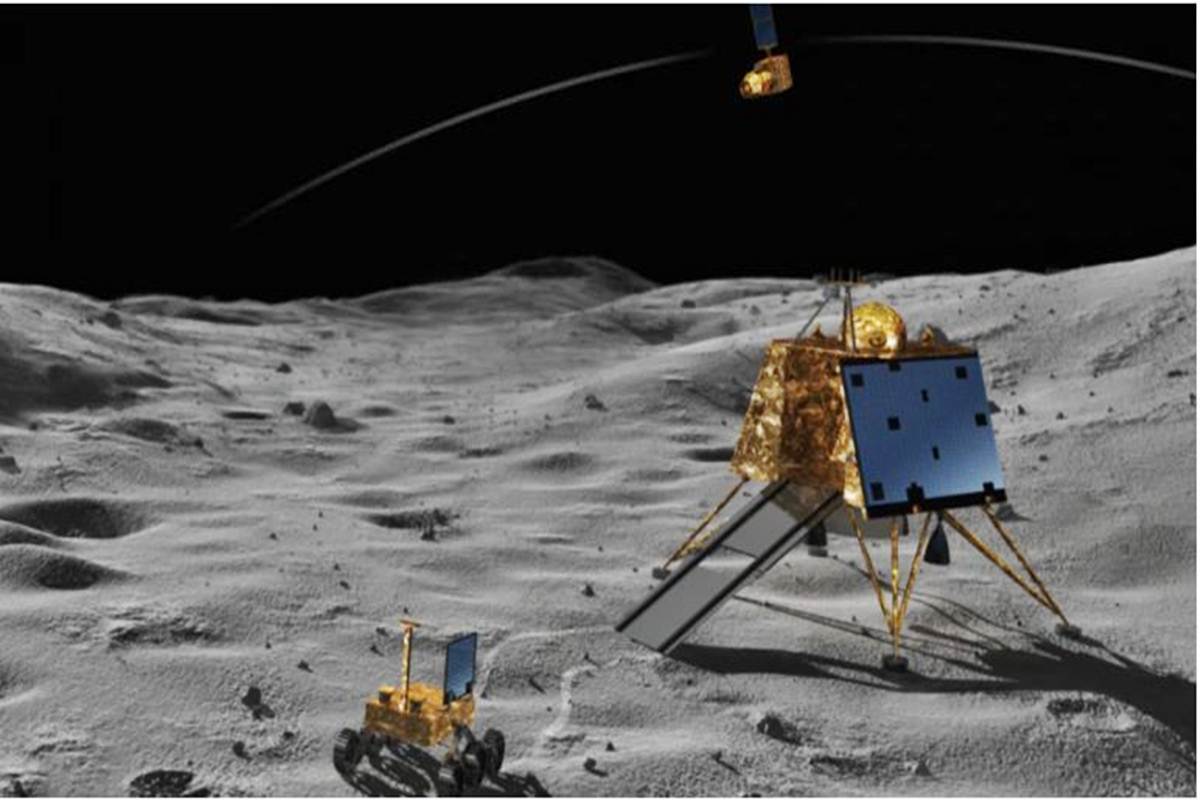
What will the rover “Pragyan” do?
The rover, equipped with wheels, will traverse the Moon’s surface in a manner similar to a cockroach, conducting experiments and collecting soil samples. It will carry out various scientific investigations, including probing the lunar surface to analyze thermal conductivity. Additionally, instruments onboard the lander will also perform experiments aimed at gaining a better understanding of the Moon. In essence, these instruments are utilized to thoroughly examine and gather information about the lunar environment.
The rear wheels of the Pragyan rover have been carved with the ISRO logo and the national emblem. This symbolic gesture will mark India’s presence on the moon’s surface. It will act as a reminder of India’s growing space program and its commitment to exploring the universe.
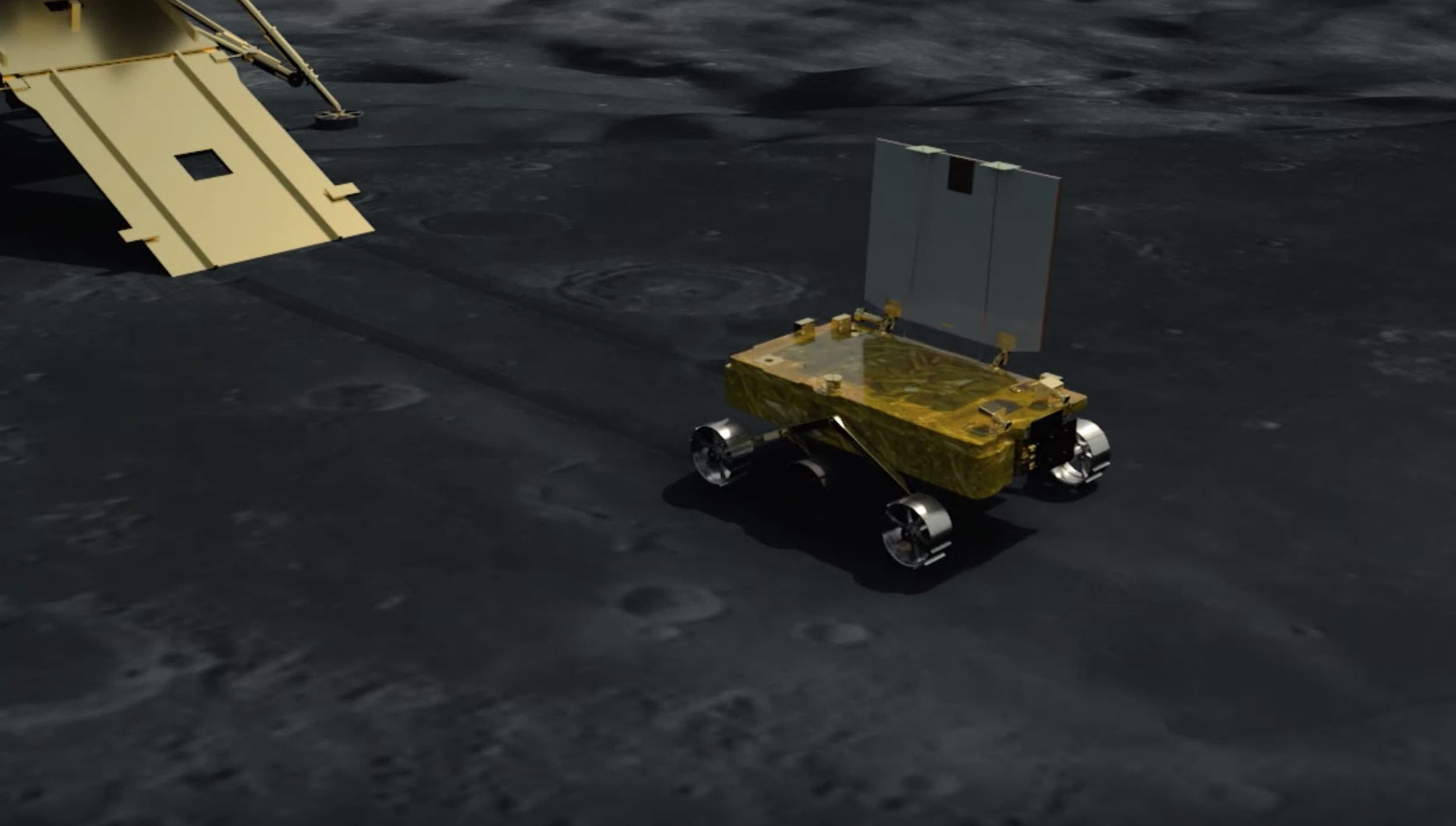
Will the propulsion module, lander and rover ever get back to Earth?
The propulsion module, lander, and rover remain on the Moon indefinitely, unless in the future, an astronaut visits the Moon and chooses to retrieve them as mementos.
How will the lander and rover send information back to Earth?
The propulsion module will keep circling the moon’s Orbit as a relay satellite. It is equipped with a communications system, which allows it to relay signals between the lander, rover, and Earth. It is also equipped with sensors, which are used to collect data about the Lunar surface. In the case of Chandrayaan-3, the propulsion module will act as a communication relay satellite after the lander and rover have soft-landed on the moon.
The propulsion module is equipped with a low as well as a high-gain antenna. The high-gain antenna will allow it to communicate with Earth even when the lander and rover are in the shadow of the moon. A low-gain antenna will allow it to communicate with the lander and rover.
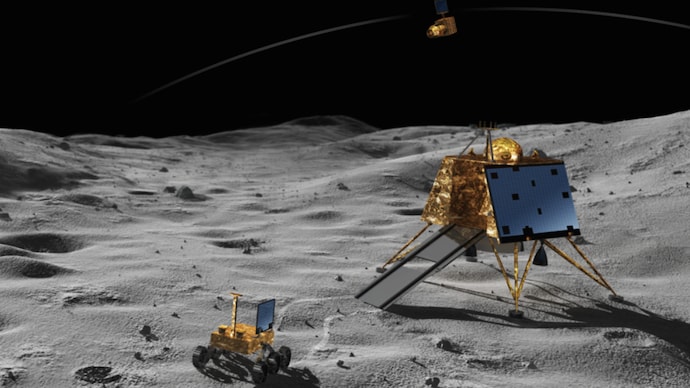
What is lifespan of the lander and rover?
The lander and rover will remain operational for approximately 14 Earth days, which is equivalent to one lunar day. The duration of a lunar day corresponds to the time it takes for the Moon to complete one full rotation on its axis. In comparison, during the same period, the Earth completes approximately 29.5 days. Both the day and night on the Moon last for about 14 Earth days each. As the lander and rover rely on solar panels to generate electricity, which require sunlight, their operational lifespan aligns with a single lunar day, lasting 14 Earth days.
What is the cost of the Chandrayaan-3 mission?
The Chandrayaan-3 is estimated to cost around Rs. 615 crore.
What is the purpose and aim behind sending Chandrayaan-3 to Moon?
After almost 50 years since the US Apollo mission to Moon, there has been a new rising interest in the Moon. This renewed interest started from the discovery of ice in the southern polar region, which has been firmly established. The presence of ice implies the presence of water, which can potentially be separated into hydrogen and oxygen—both of which are valuable rocket fuels.
This breakthrough opens up the possibility of building rockets on the Moon and utilizing locally produced fuels for future space missions. The advantage lies in the fact that launching deep space missions from the Moon is easier and more cost-effective due to its lower gravity. This would have been economically impractical if rocket fuel had to be transported from Earth to the Moon.